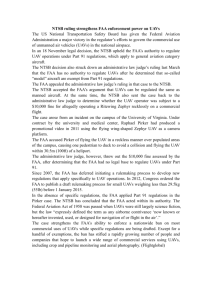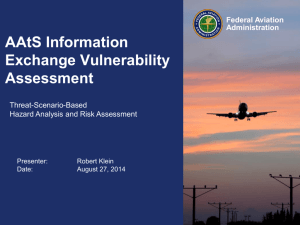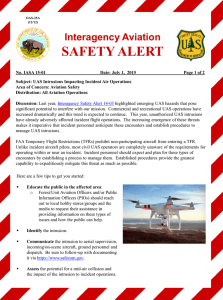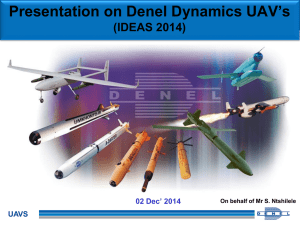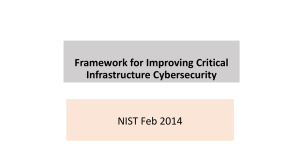National Security Key Issues Deck
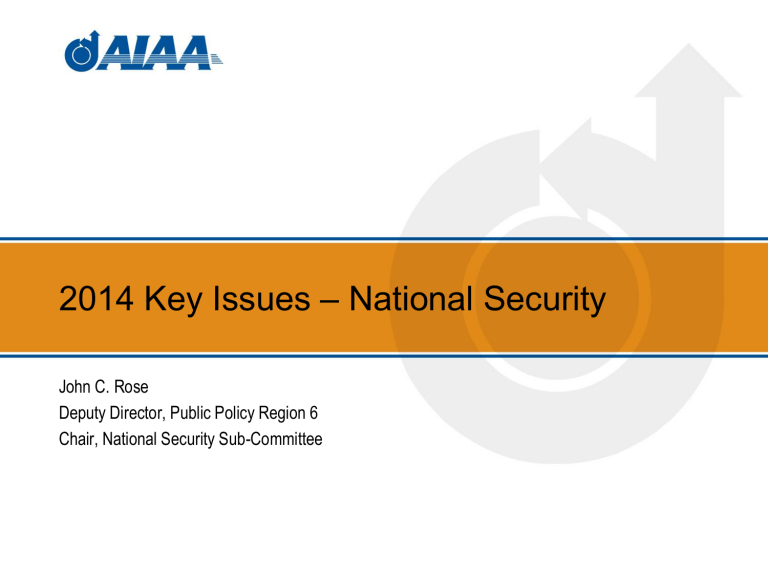
2014 Key Issues – National Security
John C. Rose
Deputy Director, Public Policy Region 6
Chair, National Security Sub-Committee
DEVELOPING A SEAMLESS NATIONAL CYBERSECURITY POLICY
In relation to national security space systems, increasingly all segments of the architecture
— ground, space, and user equipment
—are using commodity hardware, software, and protocols to accomplish their missions. Aerospace Corp.
The annual losses are likely to be comparable to the current annual level of U.S. exports to Asia
— over $300 billion.
2
DEVELOPING A SEAMLESS NATIONAL CYBERSECURITY POLICY
Recommendations:
•Assess vulnerabilities throughout the supply chain relative to space-based and ground-based equipment, especially considering recent relaxing of ITAR restrictions in the area of satellites.
•Develop a roadmap for protection of critical space-based and related ground-based assets that are vital from both a national security and critical infrastructure perspective.
•Review/propose guidelines related to cybersecurity skills, s/w, and h/w provided to companies and nation-states that could be used against the United States and our interests here and abroad.
•Specific protocol for protecting GPS and other vital hardware should be included as part of the roadmap.
•Increase the emphasis of STEM initiatives for the purpose of developing a “cyber cadre” that can address skill shortages and the growing need for cyber-capable individuals.
•Develop policies that encourage public/private cooperation to forge viable strategies that address the multiple areas of cybersecurity that ensure the integrity of global positioning systems technology and other space-based assets, national air traffic management systems, supply chain, etc.
3
ACCESS FOR UAVs IN THE NATIONAL AEROSPACE SYSTEM
“The agency will not meet the September 2015 deadline for safe (drone) integration and it is uncertain when this will be achieved,” Calvin Scovel III, the
Transportation Department’s inspector general, told the House Transportation subcommittee on aviation.
8 Feb 2014
Gerald Dillingham, director of civil aviation for the Government
Accountability Office, said the FAA hasn’t defined the safety and performance standards it needs from the six test groups, or how data will be collected and analyzed.
Q. What is the timeline for selecting the test sites?
A. We expect to make the selections late in 2012 and for the first site to be operational in 2013.
Press Release – FAA Selects Unmanned Aircraft Systems Research and Test Sites – 12/30/2013
“These three perspectives—Accommodation, Integration, and Evolution—transcend specific timelines and examine the complex relationship of activities necessary to integrate UAS into the NAS.”
-FAA UAV Roadmap
4
ACCESS FOR UAVs IN THE NATIONAL AEROSPACE SYSTEM
Recommendations:
•Direct the Federal Aviation Administration to shorten its “mid-term” and “long-term” task period of performance from “5–10 years” and “2022–2026”, respectively.
•Accelerate the effort to define the required sensors and approved approach (ABSSA, GBSSA, etc.) that will allow for safe vehicle operation within the NAS.
•FAA to review and issue a report, within 180 days, addressing the status of on NextGen being able to accommodate UAV/UAS, specifically secure Control and Communications (C2).
•Identify areas of concern that risk delays and work to create public/private partnerships that can be leveraged to minimize impacts to the overall integration effort.
•Investigate international examples of functioning UAV/UAS integration (Israel, Canada, etc.) to leverage Lessons Learned.
5


